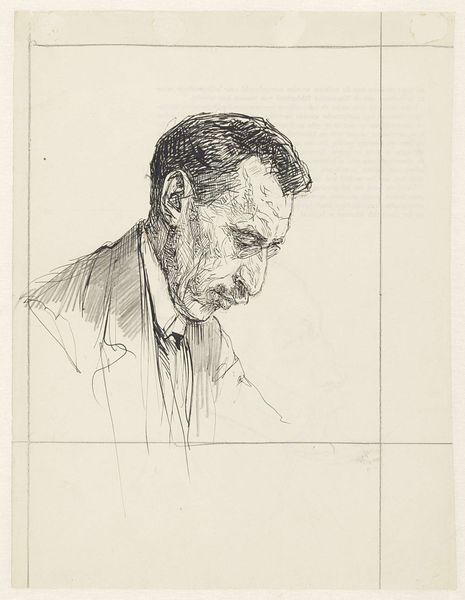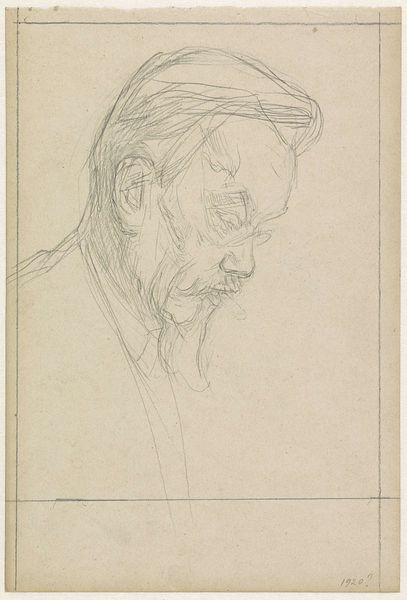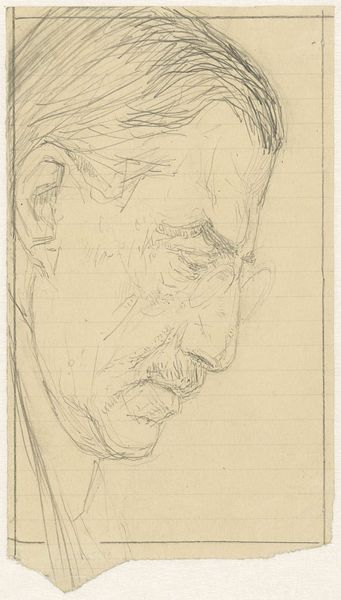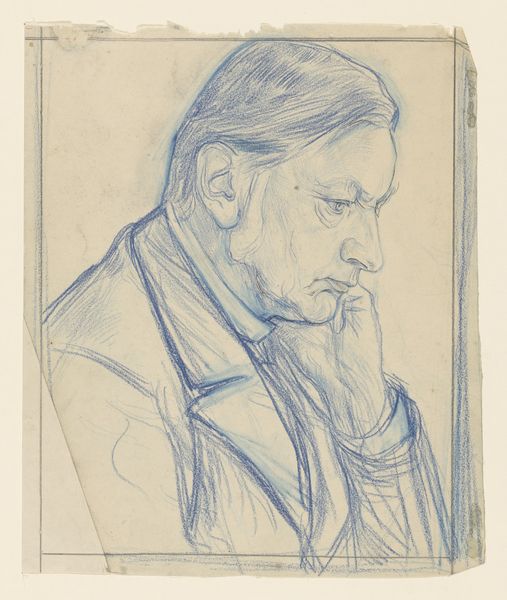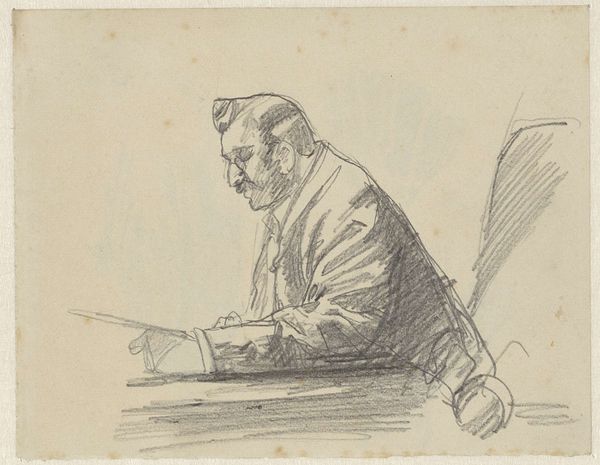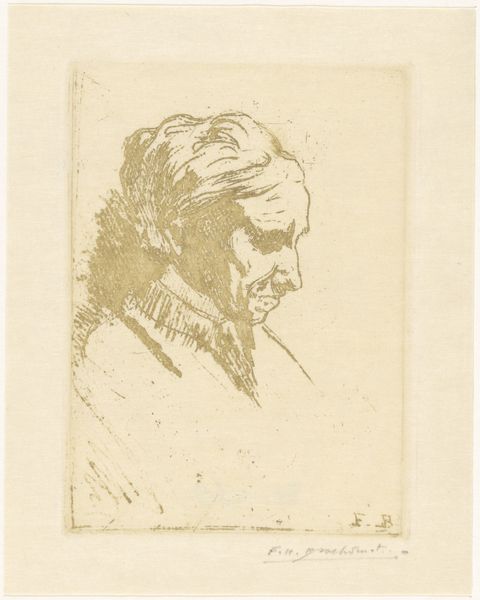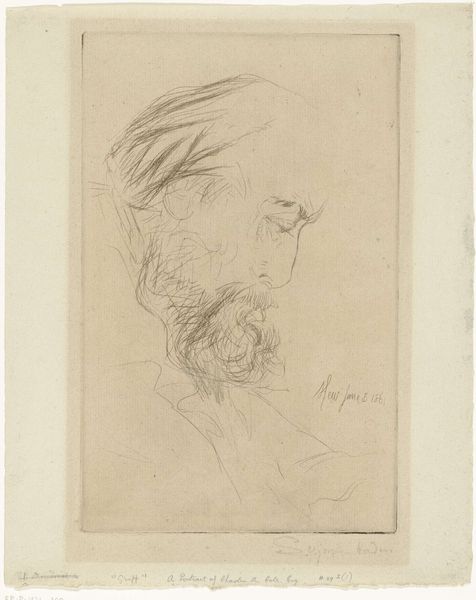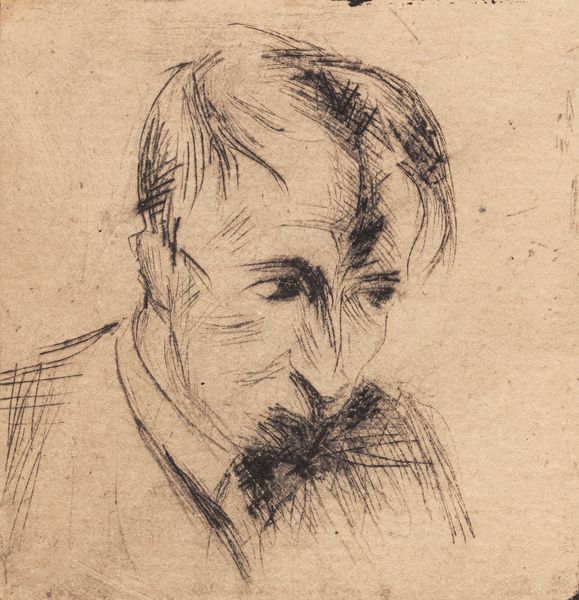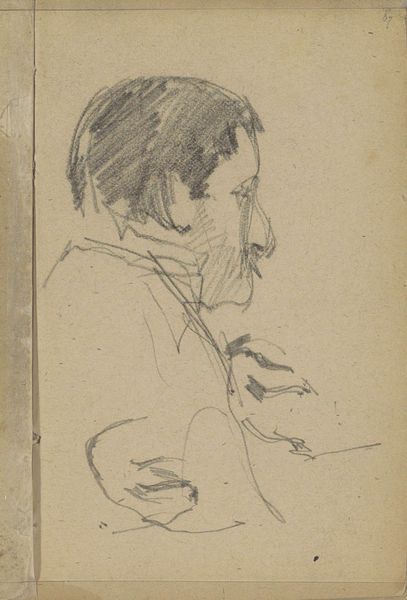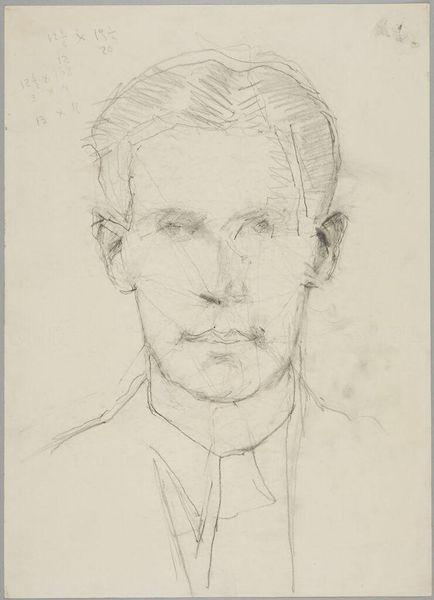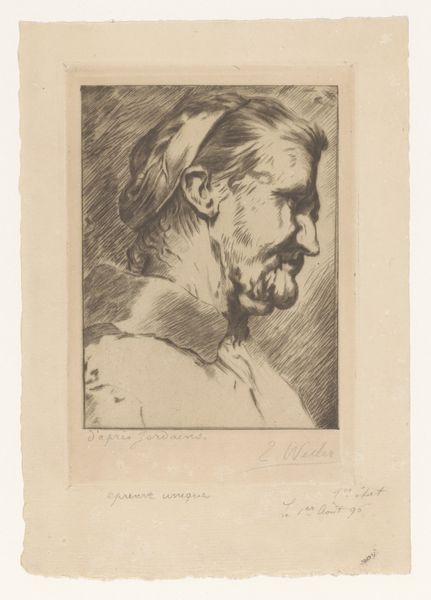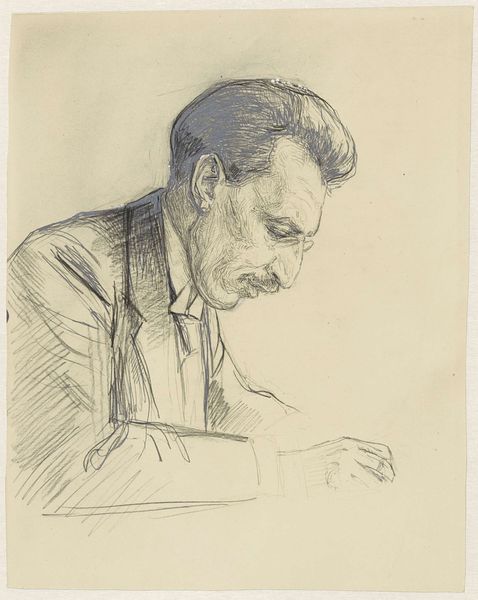
drawing, pencil
#
portrait
#
pencil drawn
#
drawing
#
facial expression drawing
#
light pencil work
#
dutch-golden-age
#
pencil sketch
#
portrait reference
#
pencil drawing
#
pencil
#
animal drawing portrait
#
portrait drawing
#
pencil work
#
portrait art
#
realism
Dimensions: height 150 mm, width 166 mm
Copyright: Rijks Museum: Open Domain
Editor: This is a pencil drawing by Jan Veth, titled "Portret van P. Visser, profiel naar rechts," dating from between 1874 and 1925. I’m struck by the intimacy of this sketch. It feels very immediate and personal. How do you read this portrait? Curator: This work invites us to consider the power dynamics inherent in portraiture itself. Whose gaze is centered? Whose story is being told, and by whom? The subject, P. Visser, is shown in profile, almost in a state of introspection or perhaps even subservience, with his gaze directed downwards. What does it mean to capture someone in this way? Editor: So, are you suggesting it’s not just a simple portrait, but perhaps a statement about social position? Curator: Exactly. Consider the historical context: the late 19th and early 20th centuries were periods of intense social stratification. Artists were often commissioned by the elite to produce portraits, which reinforced existing power structures. By rendering Visser in this subdued pose, is Veth commenting on the subject's status or perhaps even questioning the very act of portraying someone for posterity? Do you get a sense of whether this portrayal is empathetic or critical? Editor: I see what you mean. There’s a delicate balance, I think. It could be either. The light pencil work almost feels…gentle? But there’s also a certain detachment. It makes me wonder about Veth’s relationship with his subject. Curator: And that's precisely the point. Art invites us to ask those questions. What societal roles are in play here? This is what truly enriches our experience of the work, inviting a critical reflection. Editor: That’s given me a completely new perspective on what a portrait can communicate. Curator: Indeed, it can transcend simple representation to offer complex commentaries on identity, power, and representation. Editor: Thanks, I'll never look at portraiture the same way again.
Comments
No comments
Be the first to comment and join the conversation on the ultimate creative platform.
